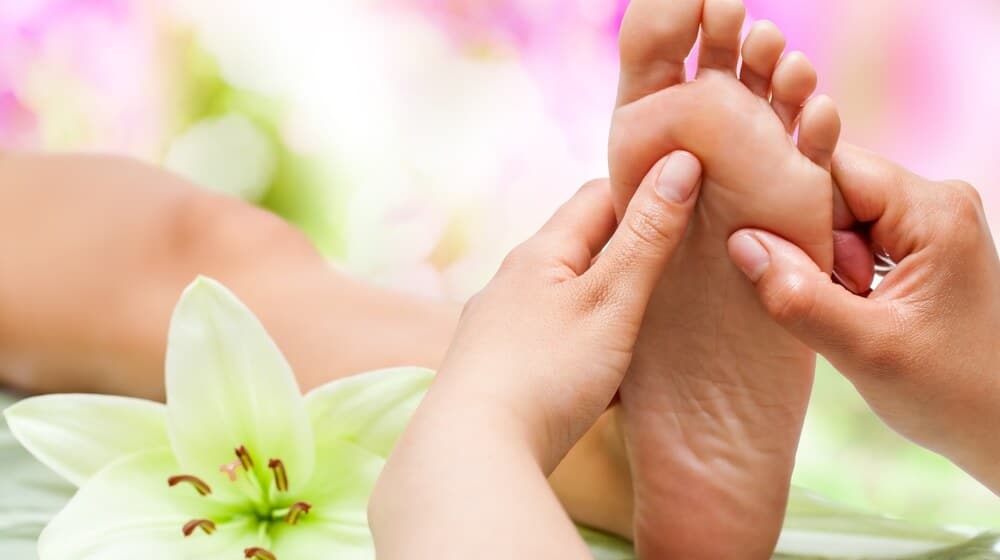
Using the hands and feet in order to activate the reflexes of the body is known as reflexology. When done properly, reflexology will promote both healing and relaxation. It is known as a holistic form of alternative therapy. Reflexology’s underlining theory is that by using certain areas of the hands and feet, particular glands and body organs will be more responsive. By simply applying pressure to reflex areas of the feet and hands, a stress releasing effect will be created, bringing the body to a state of balance. This is thought to both treat ailments and improve the overall health of the body. Reflexology is a well-known and highly respected form of therapy throughout the complementary medicine field and is gaining popularity among conventional medical treatments.
Reflexology throughout History
Reflexology dates back as far as ancient Egypt. Hieroglyphics of physicians using their hands to apply pressure to patient’s palms and soles were discovered etched into the walls of an ancient tomb which dated 2500-3000 BC. Feet have been believed to symbolize the universes unity for over 5,000 years throughout India.In the modern world, reflexology was originally introduced as “Zone Therapy” by Dr. William Fitzgerald in the early 1900s. Dr. Fitzgerald spoke of the connection between the mind and body and was the first known doctor to chart the areas where pressure could be applied in order to improve ailment areas. Zone Therapy was developed further during the 1930s and became what is now known as reflexology with the work and effort of physiotherapist Eunice Ingham.
Foot Charts
In order to guide them where to apply pressure in a way to create an effect on various parts of the body, reflexologist use foot charts. In order to produce an effect on the head, pressure is applied to the tips of the toes. Pressure can be applied to the ball of the foot in order to affect both the chest and heart. The kidney, pancreas, and liver can be affected through the arch of the foot while applying pressure to the heel contributes to the intestines and lower back.
Reflexology Session
Using a special type of skilled foot massage, reflexologists are able to stimulate nerve endings. In order to accomplish this, the feet are viewed as a mirror of the human body. As a result, signals are sent central nervous system where they are processed and then filtered to the corresponding organ or body part which is currently being worked on. Reflexologists receive training to use their fingers and thumb to both feel and manipulate the feet through applying gentle but firm pressure which in turn releases tension and clears away energy blockages which are sensed in the reflex arc. Patients who receive reflexology describe the therapy as a pleasant experience which results a profound sense of relaxation and a boost of energy. However, tender areas are often discovered throughout a session. Rubber balls, rubber bands and wooden spoons are tools which may be used in order to assist Reflexologists with their work.
Conditions Treated with Reflexology
Conditions which are currently helped and treated with reflexology include, but are not limited to: pain throughout a muscle area, certain types of stress, tension headaches, insomnia and other sleep conditions, both lower and upper back pain, pain experienced after operations, arthritis and joint pain, sports injuries, fibromyalgia, disorders throughout the digestive system, hormone imbalances, premenstrual syndrome, and both cancer and chemotherapy-induced nausea.
Benefits of Reflexology
The National Institutes of Health, National Cancer Institute, and the Mayo Clinic have each reported the following benefits of receiving reflexology. The therapy is able to calm emotions, release tension, promote relaxation, reduces pain, provides serenity for the mind, helps with both anxiety and depression, can elevate a person’s mood, reduces fatigue, has the ability to enhance sleep, and is able to restore harmony and balance.
Finding a Certified Reflexology Practitioner
In order to find or locate a nationally certified reflexologist and for more information concerning reflexology, visit the following websites:
American Reflexology Certification Board
